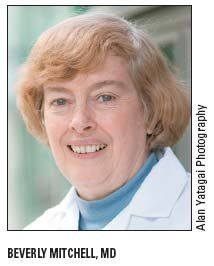Move to make CME an out-of-pocket cost gains ground
STANFORD, California-In a bid to become free of commercial influence, Stanford University School of Medicine has cut off funding from pharmaceutical and medical device companies for some continuing medical education (CME) programs. As of last month, educational offerings will be held at Stanford facilities rather than resorts and hotels, whenever possible.
ABSTRACT: As Stanford University and others curb industry funding, oncologists may need to take charge of their own continuing education. Experts weigh in on the shift away from vendor-sponsored CME.
STANFORD, California-In a bid to become free of commercial influence, Stanford University School of Medicine has cut off funding from pharmaceutical and medical device companies for some continuing medical education (CME) programs. As of last month, educational offerings will be held at Stanford facilities rather than resorts and hotels, whenever possible.
According to a news release posted on the university’s Web site, “under the new guidelines, the school may accept commercial support for CME only if it is provided for broad areas, such as medical, pediatric and surgical specialties; diagnostic and imaging technologies; and health policy and disease prevention. Funding must not linked to a specific course, topic or program. In addition, commercial exhibits will no longer be permitted at Stanford-sponsored CME activities on- or off-campus.”

The goal is straightforward: To keep CME science-driven and not swayed by marketing efforts.
“There will be significant change,” said Beverly Mitchell, MD, director of the Stanford Cancer Center. “We have several conferences that are well-known locally and sponsored by the Stanford Cancer Center, and next year we will have to find alternative sources of funding for them.”
Those include the annual Multidisciplinary Management of Cancers conference, held previously at the Silverado Resort and Spa in Napa Valley. The conference is currently supported without restriction by the pharmaceutical industry in part; alternate funding will be sought after 2009. Dr. Mitchell said the conference may be relocated from the wine country to the Stanford campus.
“The change will affect how some of our offerings are funded, and probably the venue, but I don’t believe it will adversely affect the nature of our educational conferences,” Dr. Mitchell stressed. “We’ll be looking at philanthropy to fund our educational activities.”
Smaller teaching conferences already are held without industry support, she added.
Stanford also will modernize the format of future CME programs, enhancing the use of innovative educational technologies and minimizing the use of traditional lectures-the hallmark of resort-based medical conferences. An increased focus on identifying interventions that promote quality care and improved outcomes rather than the acquisition of knowledge also is anticipated.
A nationwide trend
Such efforts are part of a nationwide trend, said Leslie Franz, executive director of health sciences communications and public affairs for the University of California, San Diego (UCSD), which includes the Moores Cancer Center. Ms. Franz said many universities have begun to adopt new and more restrictive policies regarding vendor/industry relations.
“All University of California medical centers have implemented an industry relationship policy over the past year, with the goal of reducing the risk of undue, inappropriate vendor influence on clinical decision-making without impeding necessary medical care to needy patients and other appropriate industry support,” Ms. Franz said.
“The policy does allow for support of education activities through either educational grants or Accreditation Council for Continuing Medical Education-accredited programs,” she said.
Other institutions with substantial CME responsibilities are most likely going to follow suit, said Robert J. Beck, MD, chief academic officer for the Fox Chase Cancer Center.
Fox Chase offers only a handful of regional CME conferences that provide CME credit, and each is co-sponsored by the cancer center and pharmaceutical companies.
“Those are the only commercially supported CME activities that we offer,” Dr. Beck said. “Our goal is to further limit commercial support for these activities within 3 to 5 years.”
Dr. Beck said that internally Fox Chase has eliminated all industry-supported CME with Category 1 credit.
“What will probably emerge as this trend continues is more bare-bones education and more locally and regionally supported education as a cost of doing business,” he said. “Chicken [dinners] rather than steak. At most institutions it’s not a matter of detecting any conflict of interest problems-it’s simply a matter of being careful.”
A matter of trust

Arnold S. Relman, MD, recently authored an editorial in the Journal of the American Medical Association on industry-supported CME (300:1071-1073, 2008).
“Medical education is a professional responsibility, and if doctors are going to be trusted as advisors, counselors and fiduciaries for their patients and advising them on their drugs, their education should not be subsidized by the manufacturers of those drugs,” said Dr. Relman, professor of medicine and social medicine emeritus, Harvard Medical School. “It’s a no-brainer. [Industry sponsorship] ought to be made illegal.”
According to Dr. Relman, medical institutions should police themselves just as Stanford, UCSD, Fox Chase, and others are doing, before outside agencies do the policing for them, he said.
Dr. Relman acknowledged that elimination of industry support will have implications: Doctors may have to pay out-of-pocket in order to complete required CME.
“You don’t have to offer free meals, shrimp cocktail, drinks and favors from a company,” Dr. Relman said. “CME could be made much less expensive, and the medical profession should take responsibility for its own education. That’s what the public expects, and doctors can afford it.”